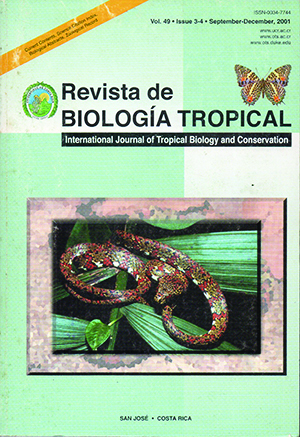Abstract
In Florida and Cuba the stone crab Menippe mercenaria (Say, 1818) is under strong fishing-pressure; nevertheless in the Mexican Caribbean it is considered as sub-utilized and poorly known resource. Artificial shelters (“condominios cubanos”) were used to study relative abundance, age structure, claw length-carapace amplitude relation, and population in three seasons and four sectors at Bahía Ascension, Quintana Roo, Mexico. The abundance varied according to the sector and sampling season: population was higher in the south and during the north wind (“Nortes”) season (January to March). The carapace amplitude was directly proportional to claw length (r2 = 0.83, 0.97 and 0.89; p < 0.05 in females, males and total, respectively). The results sugest that specimens with 37.5 and 67.5 mm of carapace amplitude are the most limited regarding refuge availability in the Bay
This work is licensed under a Creative Commons Attribution 4.0 International License.
Copyright (c) 2001 Revista de Biología Tropical

